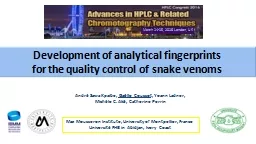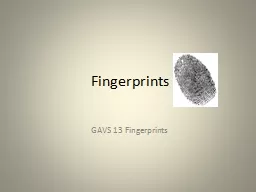PPT- Development of analytical fingerprints
Author : newson | Published Date : 2020-08-27
for the quality control of snake venoms Max Mousseron Institute University of Montpellier France Université FHB in Abidjan Ivory Coast 1 March 1415 2016
Presentation Embed Code
Download Presentation
Download Presentation The PPT/PDF document " Development of analytical fingerprint..." is the property of its rightful owner. Permission is granted to download and print the materials on this website for personal, non-commercial use only, and to display it on your personal computer provided you do not modify the materials and that you retain all copyright notices contained in the materials. By downloading content from our website, you accept the terms of this agreement.
Development of analytical fingerprints: Transcript
Download Rules Of Document
" Development of analytical fingerprints"The content belongs to its owner. You may download and print it for personal use, without modification, and keep all copyright notices. By downloading, you agree to these terms.
Related Documents














